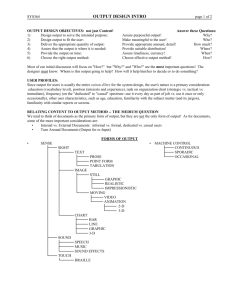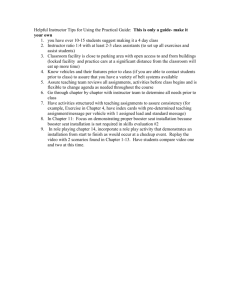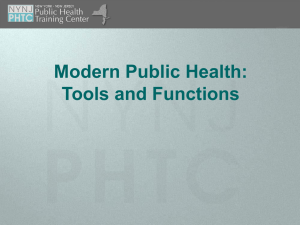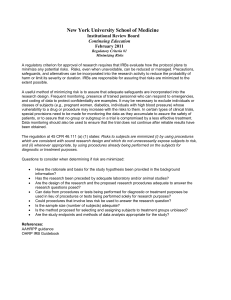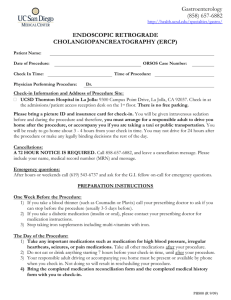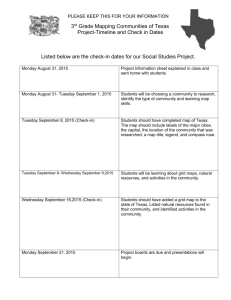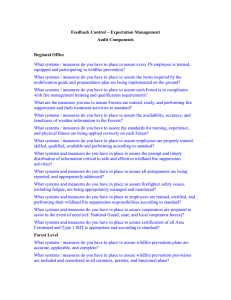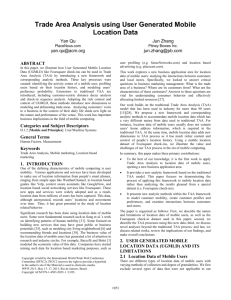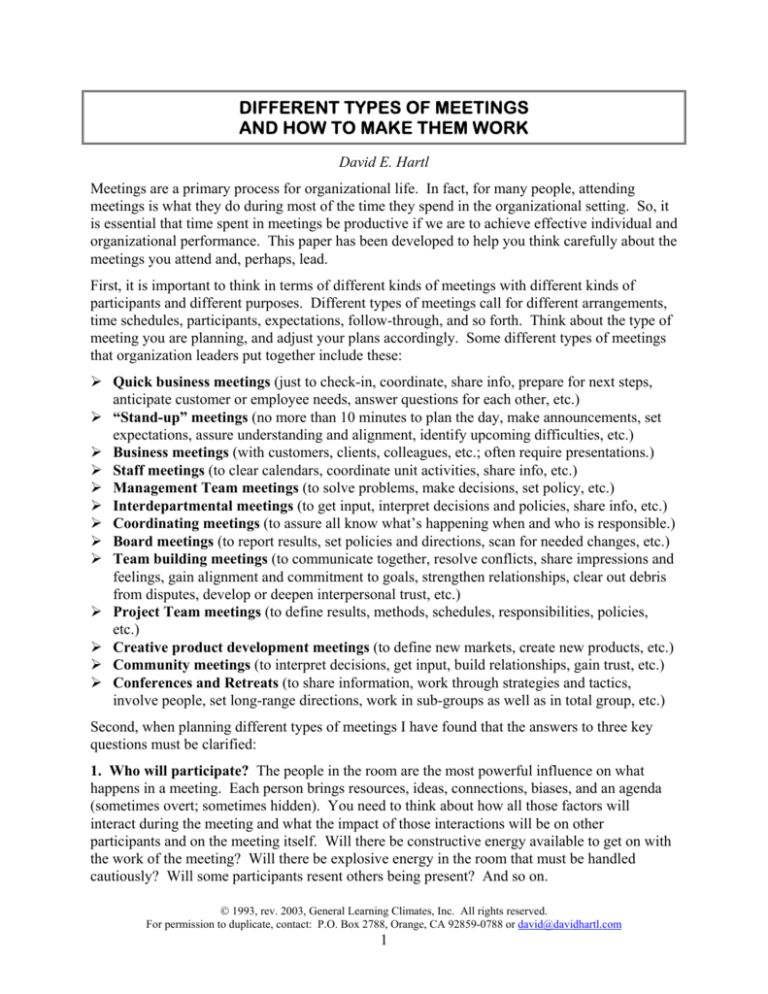
DIFFERENT TYPES OF MEETINGS
AND HOW TO MAKE THEM WORK
David E. Hartl
Meetings are a primary process for organizational life. In fact, for many people, attending
meetings is what they do during most of the time they spend in the organizational setting. So, it
is essential that time spent in meetings be productive if we are to achieve effective individual and
organizational performance. This paper has been developed to help you think carefully about the
meetings you attend and, perhaps, lead.
First, it is important to think in terms of different kinds of meetings with different kinds of
participants and different purposes. Different types of meetings call for different arrangements,
time schedules, participants, expectations, follow-through, and so forth. Think about the type of
meeting you are planning, and adjust your plans accordingly. Some different types of meetings
that organization leaders put together include these:
Quick business meetings (just to check-in, coordinate, share info, prepare for next steps,
anticipate customer or employee needs, answer questions for each other, etc.)
“Stand-up” meetings (no more than 10 minutes to plan the day, make announcements, set
expectations, assure understanding and alignment, identify upcoming difficulties, etc.)
Business meetings (with customers, clients, colleagues, etc.; often require presentations.)
Staff meetings (to clear calendars, coordinate unit activities, share info, etc.)
Management Team meetings (to solve problems, make decisions, set policy, etc.)
Interdepartmental meetings (to get input, interpret decisions and policies, share info, etc.)
Coordinating meetings (to assure all know what’s happening when and who is responsible.)
Board meetings (to report results, set policies and directions, scan for needed changes, etc.)
Team building meetings (to communicate together, resolve conflicts, share impressions and
feelings, gain alignment and commitment to goals, strengthen relationships, clear out debris
from disputes, develop or deepen interpersonal trust, etc.)
Project Team meetings (to define results, methods, schedules, responsibilities, policies,
etc.)
Creative product development meetings (to define new markets, create new products, etc.)
Community meetings (to interpret decisions, get input, build relationships, gain trust, etc.)
Conferences and Retreats (to share information, work through strategies and tactics,
involve people, set long-range directions, work in sub-groups as well as in total group, etc.)
Second, when planning different types of meetings I have found that the answers to three key
questions must be clarified:
1. Who will participate? The people in the room are the most powerful influence on what
happens in a meeting. Each person brings resources, ideas, connections, biases, and an agenda
(sometimes overt; sometimes hidden). You need to think about how all those factors will
interact during the meeting and what the impact of those interactions will be on other
participants and on the meeting itself. Will there be constructive energy available to get on with
the work of the meeting? Will there be explosive energy in the room that must be handled
cautiously? Will some participants resent others being present? And so on.
1993, rev. 2003, General Learning Climates, Inc. All rights reserved.
For permission to duplicate, contact: P.O. Box 2788, Orange, CA 92859-0788 or david@davidhartl.com
1
Different Types of Meetings and How to Make Them Work
Dr. D. E. Hartl
2. What purposes will they and you want to have achieved when the meeting is over?
Once you are clear about who will be in the room, you need to plan your meeting agenda. What
outcomes can reasonably be achieved with the people present and the time you have available?
Publicly specify only the results that you are confident you can accomplish, even if more limited
purposes mean you might have to have another meeting. It is better to build on success than to
have to recover from failure.
3. What do you want to have happen after the meeting that will be helped by having the
meeting? After the basic plans for the meeting are tentatively set, look through the meeting to
the hours and days immediately beyond the event. Ask yourself, "What will be, or must be
different after the meeting is over to enable us to achieve our purposes and goals?" Once you
are clear about the future situation you want the meeting to have achieved, go back and review
your tentative meeting plans to make sure that you have used the meeting to maximum
advantage. What arrangements, decisions, agreements, etc. must be secured to assure the followup needed? Be sure you plan to nail down those arrangements while people are still together in
the meeting room and agreements can be publicly documented. These steps are what it takes to
assure there is commitment to action in the future after the meeting is over.
Actually attending, or even running the meeting is the easy part for most people. Success is
determined, more often than not, by the care that is given to the preparations for the meeting. In
fact, if I had to guess at the cause for most failures of meetings, I would attribute the cause to
poor preparation. Too often, people walk into meetings expecting to be able to "wing it" and
have the meeting be successful, even when they are the meeting leader. The truth is, preparation
(or the lack of it) is recognized by nearly everyone because, at one time or another, we have all
tried to "wing it." It may be better to cancel a scheduled meeting if it doesn't deserve your time
to fully prepare for it.
This brings me to a final point for this paper. Meetings rarely get work done. More often, they
create work for the participants to do after the meeting. The documentation work during the
meeting is key to assuring performance of agreed to actions as mentioned above. Follow-on
memos, email, telephone messages, and other forms of reminders will also help. Sometimes it is
useful to schedule a check-in meeting after a few days or weeks, depending on the cycle-times
involved, to have people report on their progress in completing agreed upon work. This check-in
meeting has the effect of setting a deadline for performance. Someone once said, “If it weren’t
for deadlines, nothing would get done.”
One more thing. If you are responsible for leading a meeting, there is usually some pressure and
stress associated with that responsibility. Therefore, I have learned to build in time just before
the meeting to finish my preparations, focus my mind and attitude on the meeting's purposes, and
relax my body for a few minutes so that energy can flow easily and I can be enthusiastic, smile,
focus, lead, follow, contribute, support, facilitate, capture key points and necessary follow-on
actions, or just listen – all with equal effectiveness.
1993, rev. 2003, General Learning Climates, Inc. All rights reserved.
For permission to duplicate, contact: P.O. Box 2788, Orange, CA 92859-0788 or david@davidhartl.com
2


